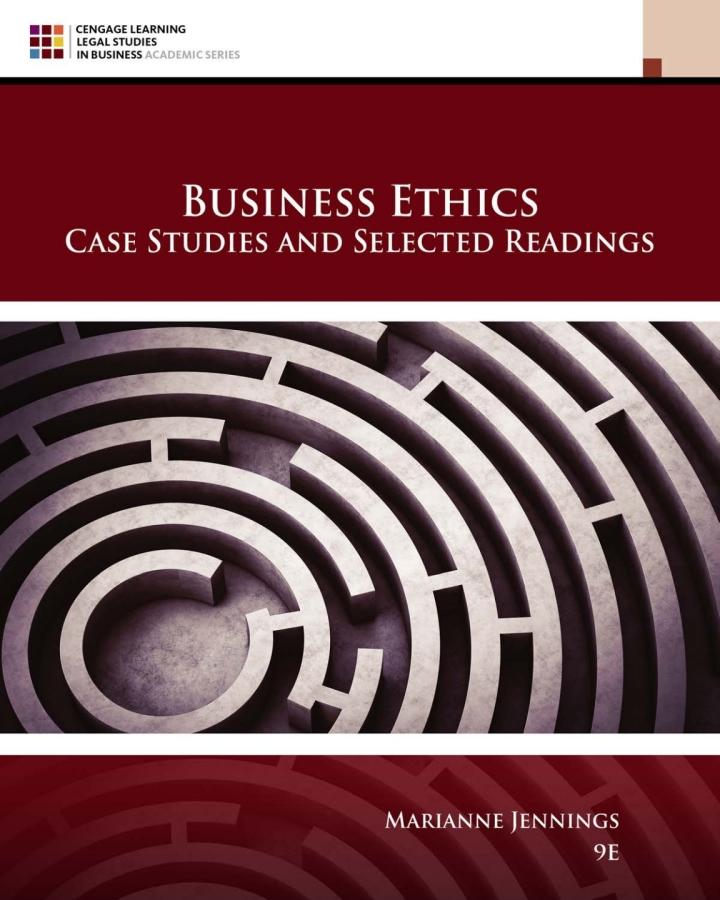Ann Hopkins was a senior manager in the Management Advisory Services division of the Price Waterhouse Office
Question:
Ann Hopkins was a senior manager in the Management Advisory Services division of the Price Waterhouse Office of Government Services (OGS) in Washington, DC. After earning undergraduate and graduate degrees in mathematics, she taught mathematics at her alma mater, Hollins College, and worked for IBM, NASA, Touche Ross, and American Management Systems before beginning her career with Price Waterhouse in \(1977 .{ }^{91}\) She became the firm's specialist in large-scale computer system design and operations for the federal government. Although salaries in the accounting profession are not published, estimates put her salary as a senior manager at about \(\$ 65,000\).
At that time, Price Waterhouse was known as one of the "Big 8," or one of the top public accounting firms in the United States. \({ }^{92}\) A senior manager became a candidate for partnership when the partners in her office submitted her name for partnership status. In August 1982, at the end of a nomination process that began in June, the partners in Hopkins's office proposed her as a candidate for partner for the 1983 class of partners. Of the 88 candidates who were submitted for consideration, Hopkins was the only woman. At that time, Price Waterhouse had 662 partners, 7 of whom were women. \({ }^{93}\) Hopkins was, however, a stellar performer and was often called a "rainmaker." She was responsible for bringing to Price Waterhouse a two-year, \$25 million contract with the U.S. Department of State, the largest contract ever obtained by the firm. \({ }^{94}\) Being a partner would not only bring Hopkins status, but her earnings would increase substantially. Estimates of the increase in salary were that she would earn almost double, or \(\$ 125,000\) annually, on average.
The partner process was a collaborative one. All of the firm's partners were invited to submit written comments regarding each candidate, on either "long" or "short" evaluation forms. Partners chose a form according to their exposure to the candidate. All partners were invited to submit comments, but not every partner did so. Of the 32 partners who submitted comments on Hopkins, one stated that "none of the other partnership candidates at Price Waterhouse that year [has] a comparable record in terms of successfully procuring major contracts for the partnership." \({ }^{25}\) In addition, Hopkins' billable hours were impressive, with 2,442 in 1982 and 2,507 in 1981, amounts that none of the other partnership candidates' billable hours even approached.After reviewing the comments, the firm's Admissions Committee made recommendations about the partnership candidates to the Price Waterhouse Policy Board. The recommendations consisted of accepting the candidate, denying the promotion, or putting the application on hold. The Policy Board then decided whether to submit the candidate to a vote, reject the candidate, or hold the candidacy. There were no limits on the number of persons to whom partnership could be awarded and no guidelines for evaluating positive and negative comments about candidates. Price Waterhouse offered 47 partnerships to the 88 candidates in the 1983 round; another 27 were denied partnerships; and 20, including Ms. Hopkins, were put on hold. Ms. Hopkins had received more "no" votes than any other candidate for partnership, with most of those votes coming from members of the partnership committee outside the firm's government services unit.........
Discussion Questions
1. What ethical problems do you see with the Price Waterhouse partnership evaluation system?
2. Suppose that you were a partner and a member of either the admissions committee or the policy board. What objections, if any, would you have made to any of the comments by the partners? What would have made it difficult for you to object? How might your being a female partner in that position have made objection more difficult?
3. In what ways, if any, do you find the subjectivity of the evaluation troublesome? What aspects of the evaluation would you change?
4. To what extent did the partners' comments reflect mixed motives (i.e., to what extent did their points express legal factors while at the same time expressing illegal ones)?
5. Ms. Hopkins listed three factors to help companies avoid what happened to her: (1) clear direction from the top of the enterprise, (2) diversity in management, and (3) specificity in evaluation criteria. Give examples of how a company could implement these factors.
Step by Step Answer:

Business Ethics Case Studies And Selected Readings
ISBN: 9780357453865
9th Edition
Authors: Marianne M. Jennings





